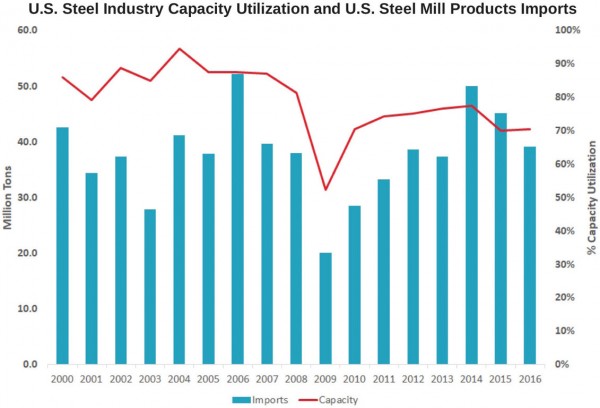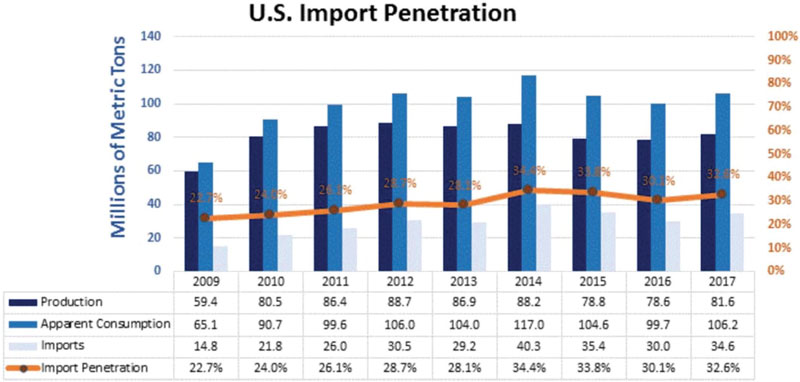Commerce Department clashes with industry economist. Will US steel capacity utilization tank or rebound is at the heart of the controversy? Or is it something else…
A report undertaken by a steel industry economist and released on April 18, 2018, has drawn fire from the United States Department of Commerce in an attempt to impugn the source as well as the substance of the report. The report was unveiled at an event which launched a coalition of U.S. manufacturers opposed to the tariffs imposed by President Donald Trump on steel imports.

The report then laid out three alternative recommendations which included tariffs, quotas, and a combination of those two measures. The president opted to impose a flat 25% tariff on all steel imports, although he later carved out exceptions to that rule, an issue which is still a matter of contention between the U.S. and some of its most important trading partners.
US Steel Capacity Utilization
Martin’s analysis showed there is not a relationship between steel imports and U.S. steel industry capacity utilization. Capacity utilization of the U.S. steel industry actually declined during the period in which Section 201 import tariffs were in force between March 2002 and December 2003, according to the report.

The critique of the report posted by the Commerce Department first attacked the messenger, mistakenly alleging that Martin was paid for the study “by a consortium of foreign steel companies and importers” and that the conclusions of the report “supports their interests.” Martin responded that his firm “received no compensation for this current analysis of the relationships between steel industry capacity utilization and import levels and the Section 201 tariffs.”
Apparently, the Commerce Department was referring to a 2017 study prepared by Martin for the American Institute for International Steel on the impact of imported iron and steel on the U.S. economy. Martin asserted that the AIIS “represents the entire steel supply chain, including importers, and is not a consortium of foreign steel companies,” although it is known that AIIS advocates in support of steel imports.

Martin’s study, the Commerce official continued, also “ignores the International Trade Commission’s 2005 evaluation of the Section 201 tariffs, which opined that the decline in capacity utilization in 2002 and 2003 was because both capacity and production increased during that time. Martin responded by reiterating that the intent of the Section 232 tariffs is to increase capacity utilization to 80% in order to ensure national defense readiness. Industry capacity utilization data is clear, he added, that “steel industry capacity utilization fell during the months Section 201 tariffs were in place. History does not support the fact that steel industry capacity utilization increases under tariffs.”
The Commerce report also attacked the Martin Associates study on the grounds that it focuses only on “short-term variations in capacity utilization rather than longer-term data,” while the Section 232 tariffs, the official continued, “are designed to address a long-term issue.” Martin’s report was therefore “flawed because it ignores other factors that would influence capacity utilization, imports, or production levels” and “doesn’t take into account other reasons why capacity utilization was low in 2002, most notably the recession.”
Martin countered that his study used quarterly data from 2001 through 2016. “Sixty data points between 2001 and 2016,” he added, “is a significant set of data and includes the impact of the 2009 recession. Actually, during the 2002 recession, industry utilization was higher, averaging 88.8%, than in 2003, when it averaged 84.9%.”
Long Term Issues
Another response to Commerce’s same point might be to question whether the Trump tariffs having anything to do with addressing a long-term issue. Originally to be applied across the board, the president first exempted Canada and Mexico from the measures, and later carved out other exemptions for some U.S. allies such as the European Union, Australia, and South Korea (although not others, such as Bahrain.) The most recent exemptions, which were to expire on May 1, were then extended by the president for another 30 days.






